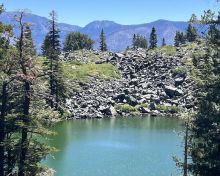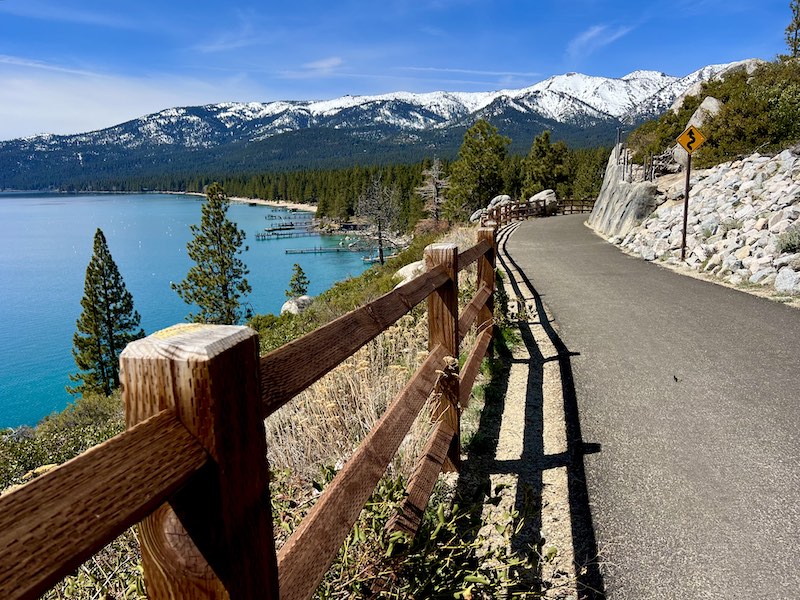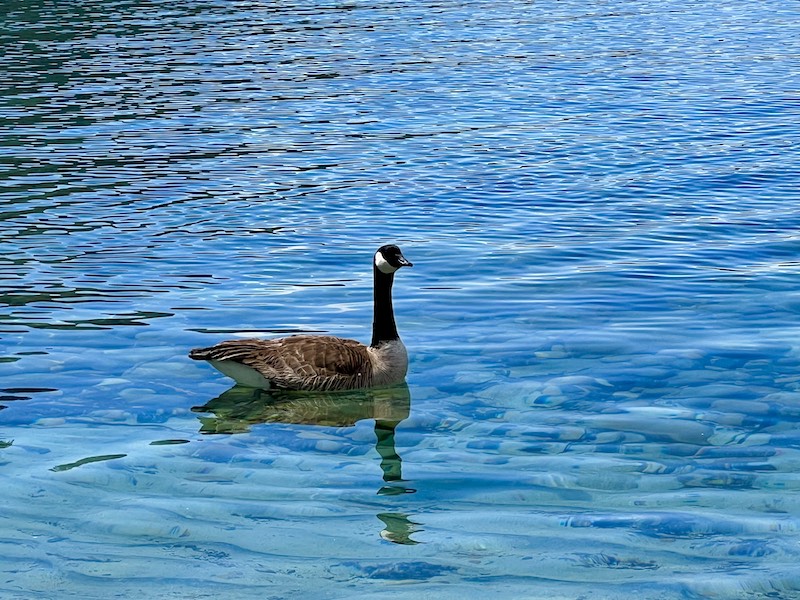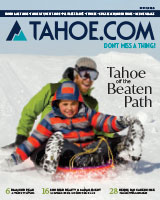
What does “leave no trace” mean to you?
To many who call Tahoe home (or their favorite outdoor recreation destination), it’s more than a code of conduct. It’s a way of life.
“Leave no trace” means recreating responsibly and respectfully. It means coexisting in harmony with the delicate environment, wildlife and other people. It means practicing sustainability and being mindful of our impact. It also means being a positive influence and inspiring others to not only create, but also be the change they want to see.
The Tahoe region has seen an immense uptick in tourism over the past decade, which has made “leave no trace” principles on the forefront of hot topics in the community and tourism industry at large. Continuing education and participation will ensure that the region will remain enjoyable for generations to come.
Below, I have outlined some tips to help you apply “leave no trace” principles in your next visit and everyday life.

The East Shore Trail gives locals and tourists a sustainable path from Incline Village to Sand Harbor.
Prepare in Advance for Waste Disposal
Before you begin your trip, it’s important to do some research on the local regulations, trail etiquette and public facilities for proper waste disposal.Make a list of exactly what you need and figure out a plan of how you will carry it and dispose of it properly. I always recommend bringing a variety of bags for various needs: a dry bag for my electronics and layers in case weather changes, a separate bag for my food, and WAG bag for human waste.
Many points of interest have waste management facilities at the trailhead or scattered around the parking lot or campgrounds. If you are farther in the backcountry or on a lesser-trafficked trail, you might have to plan to bring your trash with you to dispose of elsewhere, such as at your hotel. Pack accordingly to be fully prepared to bring it back with you just in case.
Waste not only ruins the visual integrity of the trail, but also can harm the fragile ecosystem and wildlife. Even “compostable” foods such as bananas can negatively impact the soil and digestive systems of the local critters. If you pack it in, pack it out!
And, lastly, make sure to clean up after your four-legged friends! Their waste contains bacteria that could be harmful to the soil, plants and wildlife.
Along with proper waste disposal, maybe pick up a few pieces of other people’s trash along the way. It’s our collective responsibility to ensure we create a safe and sustainable environment for all. The better we take care of our trails, the more we can enjoy them for years to come!
Use Existing Trails
Making your own trail might sound like an exciting adventure, but it can drastically harm the fragile ecosystem. The trail systems in Tahoe have been carefully planned and are meticulously maintained to ensure hikers coexist with the land and wildlife as sustainably as possible. Wandering off the official trail can cause extensive damage to the nutrients and consistency of the soil, and it is crucial to be mindful of every step you take. If you do find yourself off-trail, which can easily happen on some of the more challenging or backcountry trails, try to minimize your impact as you find your way back to the official trail. One way to do this is to try to walk on rocks or gravel, if possible, instead of disrupting the soil.I also recommend having a GPS or map with you to help you become familiar with the trail before your hike – and to navigate your way back to it should you get lost.
Be a Good Influence
Be considerate of other people and wildlife that you share space with. Remember, noise is considered pollution too. Many people like to use the outdoors as a refuge from the chaos of the outside world. Nature is a place to go with no distractions or obligations, a place to relax, reboot and restore their mind and body.
Keeping your music to a minimum volume when near other people, or using headphones, can help everyone have an enjoyable and peaceful experience.
Picking up trash left behind by previous hikers can also help, and if other hikers see you doing this they might be inspired to join in the cleanup effort.
Utilizing the power of social media can also help educate others on the impact they have and how they can help to contribute.
Another way to make a positive impact is to volunteer. There are numerous monthly trail and lake cleanups around the region, held by nonprofits such as Keep Tahoe Blue and Clean Up the Lake. Not only is this a great way to clean up the trails and beaches, but also it’s a great way to connect with like-minded outdoor enthusiasts in the community!

Practice "leave no trace" to protect our wildlife friends and their fragile digestive systems.
Practicing “leave no trace” principles isn’t just an individual responsibility, it’s a collective community effort to ensure we protect the outdoor spaces we love and enjoy.
Every action we take, no matter how small, adds up to a larger collective impact and can inspire others to contribute to the cause. Let’s keep Tahoe clean, green and blue for generations to enjoy. Responsibly.
All photo credits: Kirsten Alexis


 Kirsten is an outdoor adventure enthusiast, writer and photographer. You can typically find her hiking, paddleboarding, cross-country skiing and checking out new spots to share in the Tahoe Donner region. She has been lucky to call Tahoe her second home since she was a child and aims to inspire people to experience Tahoe and fall in love with the beauty and adventurous spirit of the region through her blogs and content.
Kirsten is an outdoor adventure enthusiast, writer and photographer. You can typically find her hiking, paddleboarding, cross-country skiing and checking out new spots to share in the Tahoe Donner region. She has been lucky to call Tahoe her second home since she was a child and aims to inspire people to experience Tahoe and fall in love with the beauty and adventurous spirit of the region through her blogs and content. 





